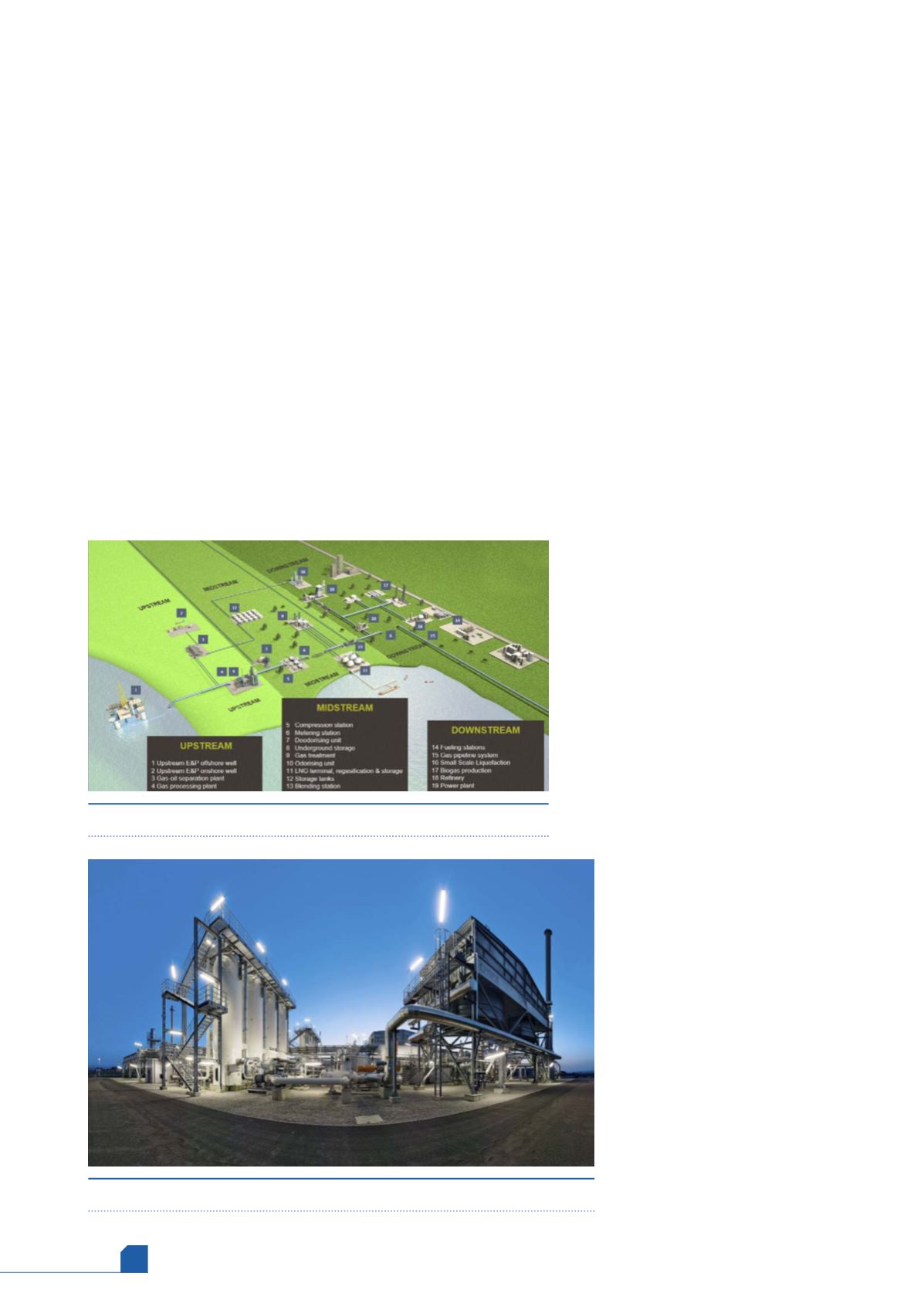
August
2019
HYDROCARBON
ENGINEERING
62
from a variety of sources, liquefaction technology, as well as
loading and refuelling station equipment.
The decisive step before liquefaction
Natural gas must be properly treated prior to liquefaction.
Independently of whether the source is biogas, landfill gas,
various qualities of field or sales gas, it is fundamental to select
the ideal combination of the most efficient and economical
treatment technologies. The processing of the gas may include
the removal of water, mercury, hydrogen sulfide, carbon dioxide,
ammonia, and other components. The processing technologies
that may be applied to this end include various types of filtration
and separation processes, such as scrubber units to absorb
impurities, or adsorption technologies, such as molecular sieves.
This range of methods reflects the fact that the composition of
natural gas often differs widely depending on its source. The
purpose of processing the feed gas is to convert it into a gas of a
quality suitable for subsequent liquefaction.
Technologies know how and plant
engineering experience
The centrepiece of the actual liquefaction process is the
piece of equipment that generates high pressures and low
temperatures. It ensures that the gas reaches a liquid phase
before being stored and then made available to end
consumers at vehicle LNG refuelling stations or truck loading
facilities, which may or may not be located in the small scale
liquefaction plant’s compound.
Bilfinger joined forces in a strategic partnership for both
the liquefaction of the gas and the distribution of the LNG in
order to combine the cryogenic technologies know-how
with Bilfinger’s plant engineering expertise. Major aspects of
this effort were questions of efficiently combining the
process technologies, pre-determining process packages in
order to reduce installation times on site, and the ability to
offer proper maintenance of such systems.
The plant concept allows significant flexibility in terms of
capacity, expandability, and process requirements entailed by
the different gas sources. The liquefaction units are available
in different standard capacity configurations, which allows an
existing plant to be expanded subsequently without any
technical problems. All modules of the system are
dimensioned such that they can be transported by lorry. For
the fuelling stations, depending on the end user’s
requirements, the LNG is either pumped directly in liquid
form or evaporated locally. This gives the operator the
option to also sell both LNG and CNG at the
same refuelling station.
Small scale LNG plants: a
market segment with growth
potential
The international market’s interest in small
plants serving the liquefaction of natural gas
has been growing in recent years. Small scale
LNG plants give investors the option of
purchasing a single plant covering all the
relevant process stages in the production and
distribution of LNG to end users, regardless of
the source of the gas. The operators of such a
plant also benefit from a high availability of
LNG on commercially favourable terms,
which is an advantage at locations
lacking a connection to the
infrastructure of available LNG
terminals.
In many Eastern European
countries, LNG terminals for loading
trucks with large quantities for resale
are not common. Dealers are
therefore faced with the choice of
either covering long distances at high
cost in order to reach existing
loading stations, or of entering into
the promotion, production and
distribution of LNG themselves. This
is exactly where small scale LNG
comes in.
Pioneering new trend
The importance of fuels for the
mobility and transport sectors is
changing. Increasingly, the trend is to
Figure 2.
Bilfinger gas treatment plant.
Figure 1.
Bilfinger activities along the gas value chain.








